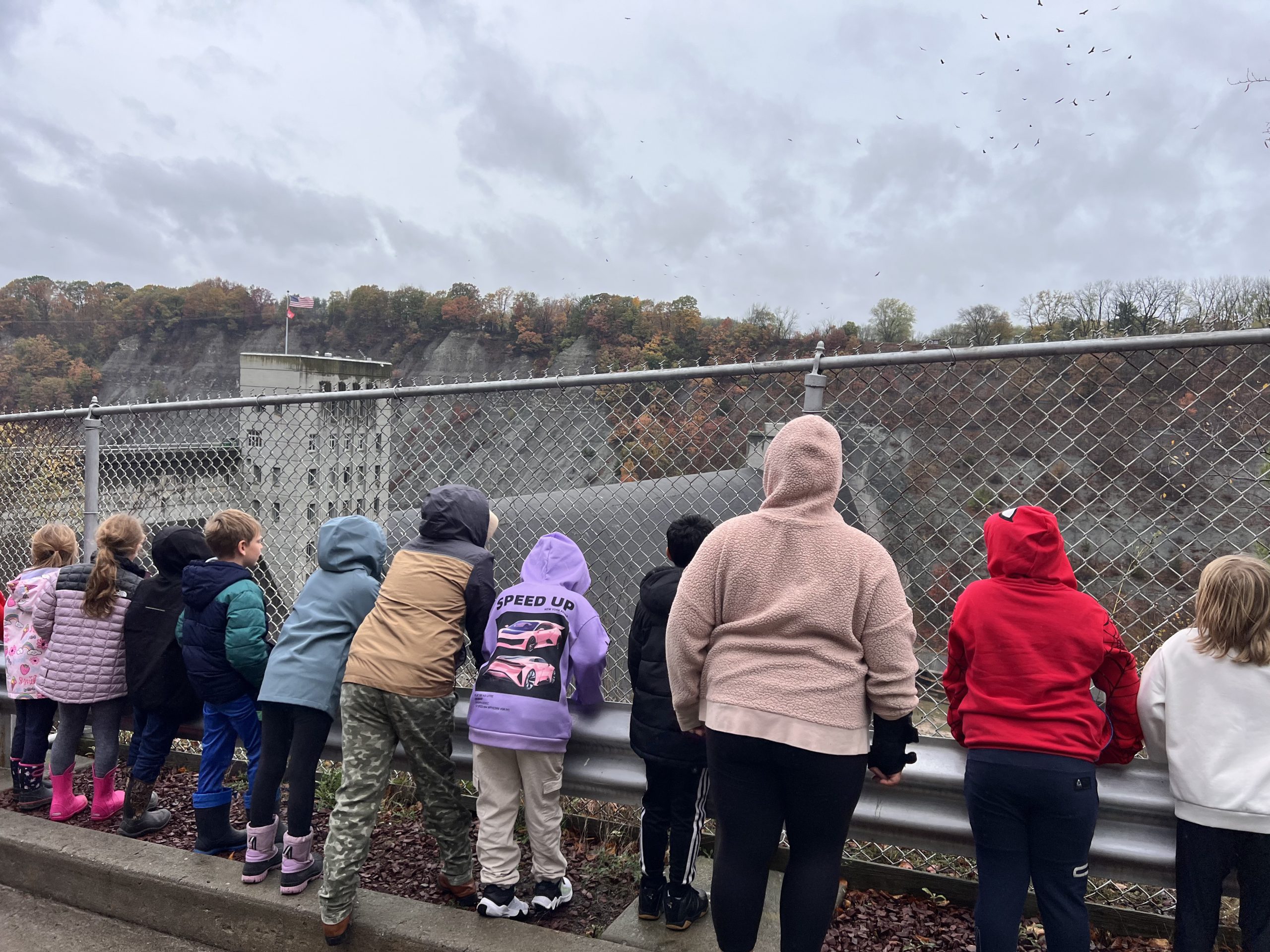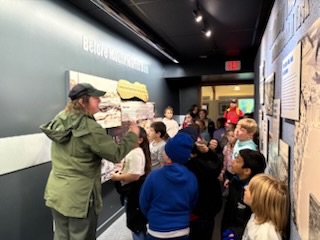Third graders at Hornell Intermediate School have been studying water and climate and their recent field trip to the Mount Morris Dam gave them the chance to connect classroom learning with the real world while discovering how they’re part of a much larger community network.
Before the trip, students explored how water moves on a slope and discovered that the Genesee River flows north to Rochester. They also compared it to the Canisteo River, made water observations during STEM time, and discussed how rivers, tributaries, and streams work together within a watershed. In class, students compared the Almond Dam and the Mount Morris Dam, both managed by the U.S. Army Corps of Engineers, and examined how weather and climate can affect water levels, not just in faraway places, but right here at home.

During the field trip, students learned that the Genesee River was unusually low due to the current drought. Their tour guide explained how rainfall impacts the river’s depth and shared how much the water level had risen after just one day of rain. This real-life example helped students see how weather patterns influence the water systems that surround their own communities, deepening their understanding of how science and stewardship go hand in hand.
Inside the dam, students discovered that it contains more stairs than the Statue of Liberty! A favorite moment came when they shouted “Hornell!” down the stairwell and listened as their voices echoed back. They also explored the parapet, visited the curtain wall, and learned about the dam’s daily operations and local history of flood prevention. Seeing how the dam helps protect nearby towns made students proud to understand how such structures play a vital role in keeping their communities safe.

To build on what they learned, students completed a series of hands-on activities that connected science to everyday life. These included a multiple-choice quiz, a word search, and an animal hunt along a nature trail where they observed wildlife in its natural habitat. Since students will study animals and habitats later this year, this activity served as a meaningful introduction to how living things depend on the environment and how communities, both human and animal, thrive when balance is maintained. Students also measured and compared temperatures in Celsius and Fahrenheit, recording the day’s weather conditions as budding citizen scientists.
This field trip was more than a day of learning, it was a chance for students to see themselves as part of the community and the environment they study. By exploring how local landmarks like the Mount Morris Dam help protect and sustain their region, students gained a stronger sense of place, responsibility, and curiosity about the world around them.
